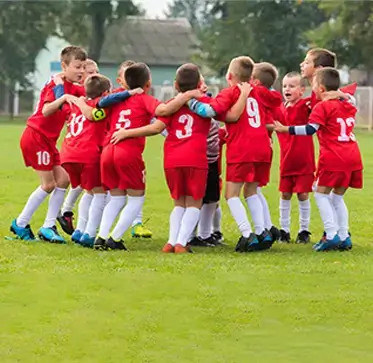CRFC BLOGS
LATEST BLOGS & NEWSLETTERS
Guide to Soccer Rules
The Importance of Youth Soccer Rules
Basic Youth Soccer Rules
The basic youth soccer rules provide the foundation for the game and are essential for every player to know.
Team Composition
In youth soccer, each team can have up to 11 players, including one goalkeeper. However, the number of players is often reduced for younger age groups. For example, youth soccer players might play small-sided games with only 7 or 8 players on each side. This reduction in team size ensures that every child gets more opportunities to touch the ball and participate in the game. Smaller teams also help to keep the game manageable and engaging for younger players.
Game Duration
Youth soccer games are typically divided into two halves, with the length of each half varying depending on the age of the players. For younger children, each half is kept short. As players get older, the duration of the halves increases, but even for older youth players, the game is usually shorter than an adult match. This format helps keep the game fun and prevents fatigue, ensuring the children remain enthusiastic and engaged throughout the match.
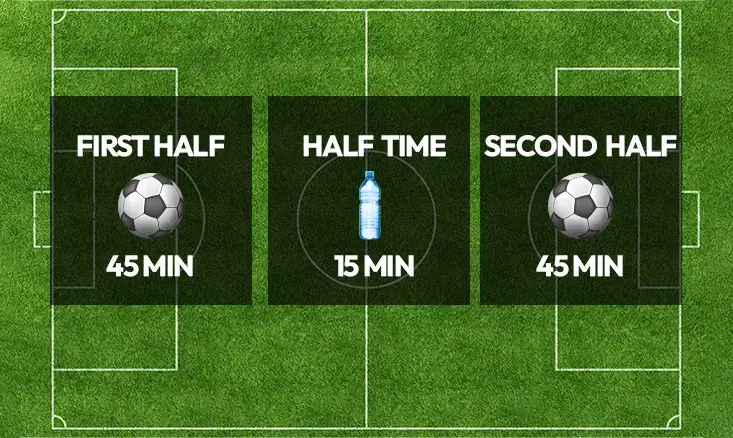
Field Size and Goal Dimensions
The size of the soccer field and the goals are adjusted based on the age of the players. For younger age groups, the field is smaller, and the goals are lower and narrower. Scaling down is essential to making the game appropriate for the player’s physical abilities. Smaller fields mean that children can cover the distance more efficiently, and smaller goals encourage accuracy in shooting rather than relying on power alone.
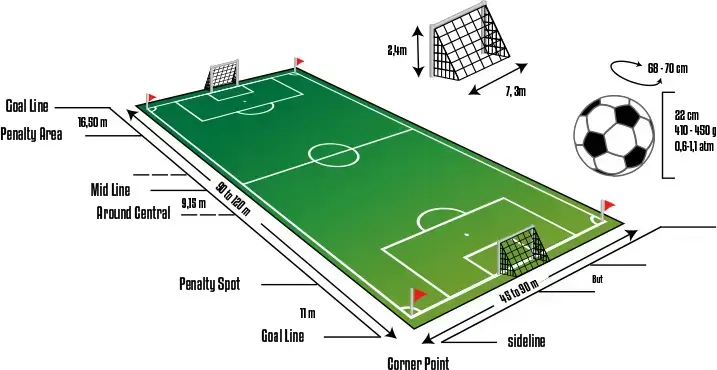
Youth Soccer Rules for Beginners
Youth soccer rules for beginners are designed to be easy to understand, helping new players and parents grasp the basics of the game. These rules focus on the fundamental aspects of soccer, such as scoring, ball movement, and player positions.
Scoring
Scoring in youth soccer is straightforward. A goal is scored when the entire ball crosses the goal line between the posts and beneath the crossbar. There are no complicated scoring systems or rules; the team that scores the most goals wins the game. Keeping the scoring rules simple helps beginners focus on playing the game.
Ball In and Out of Play
The ball is considered out of play when it fully crosses the touchline (the sideline) or the goal line. If the ball crosses the touchline, a throw-in is awarded to the opposing team. If the ball crosses the goal line without resulting in a goal, a goal kick or corner kick is awarded, depending on which team last touched the ball. Understanding when the ball is in or out of play is one of the first youth soccer rules for beginners to learn. It helps them grasp the flow of the game and the concept of boundaries.
Player Positions
Youth soccer introduces beginners to the basic player positions: forwards, midfielders, defenders, and the goalkeeper. Forwards focus on scoring goals, midfielders play both offense and defense, defenders protect their goal, and the goalkeeper is the last line of defense, tasked with stopping shots from going into the goal. While these positions are important, in youth soccer, players are often encouraged to try different roles to develop a well-rounded understanding of the game.
10 Rules of Youth Soccer
While there are many rules in soccer, certain youth soccer rules are essential for every player and parent to know. These 10 rules form the game’s core and help ensure that it is played fairly and safely.
1. Offside Rule
The offside rule is one of the most important youth soccer rules. A player is in an offside position if they are nearer to the opponent’s goal line than both the ball and the second-last defender when the ball is played to them. The offside rule prevents players from “goal hanging” or staying near the opponent’s goal without participating in the play. This rule encourages teamwork and strategic play.
2. Free Kicks
Free kicks are awarded when a player commits a foul or breaks a rule. There are two types of free kicks: direct and indirect. A direct free kick allows a player to score a goal directly from the kick, while an indirect free kick requires the ball to touch another player before a goal can be scored. Opponents must be at least 5-10 yards away from the ball during a free kick, depending on the age group.
3. Throw-ins
A throw-in is awarded when the ball crosses the touchline. The opposing team is allowed to throw the ball back into play. The player must use both hands to throw the ball from behind and over their head while keeping both feet on the ground. Throw-ins are a common part of the game and are often the first skill young players learn.
4. Goal Kicks
A goal kick is awarded to the defending team when the ball crosses the goal line without resulting in a goal and is last touched by an attacker. The goalkeeper usually takes the goal kick, sending the ball back into play. Understanding goal kicks is essential for young players, as it helps them reset and return to position after a play.
5. Corner Kicks
A corner kick is awarded to the attacking team when the ball crosses the goal line and is last touched by a defender. The ball is placed in the corner nearest to where it went out of play, and the attacking team can attempt to score from the kick. Corner kicks are exciting moments in the game, often leading to goal-scoring opportunities.
6. Penalty Kicks
A penalty kick is awarded when a foul occurs inside the penalty area. The attacking team gets a chance to score from the penalty spot, with only the goalkeeper allowed to defend. Penalty kicks are high-pressure situations that can change the outcome of the game. They are a key aspect of youth soccer rules and penalties.
7. Substitutions
Substitutions allow coaches to rotate players during the game, giving them time to rest and recover. In youth soccer, substitutions are usually unlimited, meaning that players can re-enter the game after being substituted. This rule ensures that all players get equal participation opportunities and that no one is overworked.
8. Fouls
Fouls occur when a player makes illegal physical contact with an opponent, such as kicking, tripping, pushing, or holding. The opposing team is awarded a free kick when a foul is committed. Understanding youth soccer rules and fouls is essential for playing the game safely and fairly.
9. Handball
In soccer, only the goalkeeper is allowed to use their hands, and only within the penalty area. If any other player deliberately handles the ball, a free kick or penalty kick is awarded to the opposing team. This rule is one of the easiest for beginners to understand and is strictly enforced at all levels of play.
10. Sportsmanship
Good sportsmanship is one of the most important youth soccer rules. Players are expected to respect their opponents, coaches, and referees. Unsportsmanlike behavior, such as arguing with the referee or disrespecting opponents, can result in penalties, including yellow or red cards. Teaching children to play with respect and integrity is fundamental to youth soccer.
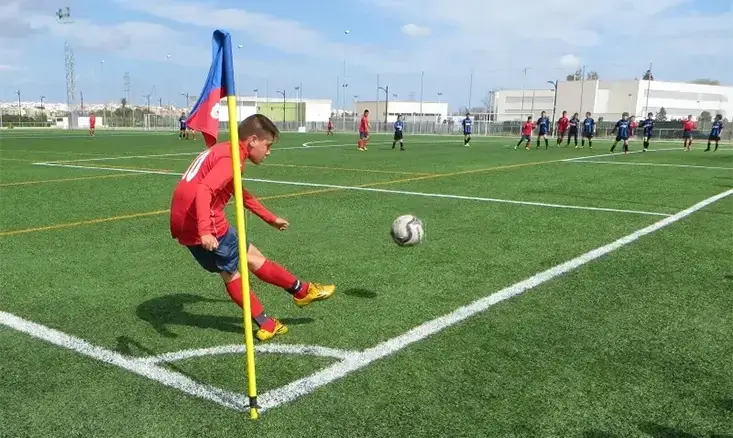
Professional Youth Soccer Rules
As players grow and develop, they may move into more competitive leagues where professional youth soccer rules apply. These rules are similar to those used in adult soccer but are adapted to suit younger players.
Advanced Regulations
In professional youth soccer, the rules are more strictly enforced, and players are expected to have a higher understanding of the game. The offside rule, for example, is closely monitored, and tactical fouls are penalized more severely. These rules help prepare young athletes for higher levels of competition, where the game is faster and more demanding.
Player Development
Professional youth soccer rules emphasize developing technical skills, tactical awareness, and mental toughness. Coaches focus on teaching players how to think strategically, make quick decisions, and maintain composure under pressure. These skills are essential for players who aspire to compete at higher levels, including high school, college, or even professional soccer.
Youth Soccer Fouls
Fouls are an Unavoidable part of soccer, but understanding the rules can help players avoid them and play the game safely.
Common Fouls
Common fouls in youth soccer include kicking, tripping, pushing, or holding an opponent. These actions are against the rules and also dangerous. Coaches work with players to help them understand the importance of playing safely and avoiding unnecessary fouls.
Indirect Free Kicks
Indirect free kicks are given for less serious offenses, like blocking an opponent without contact or when the goalkeeper handles a back-pass. The ball must touch another player before a goal can be scored from an indirect free kick.
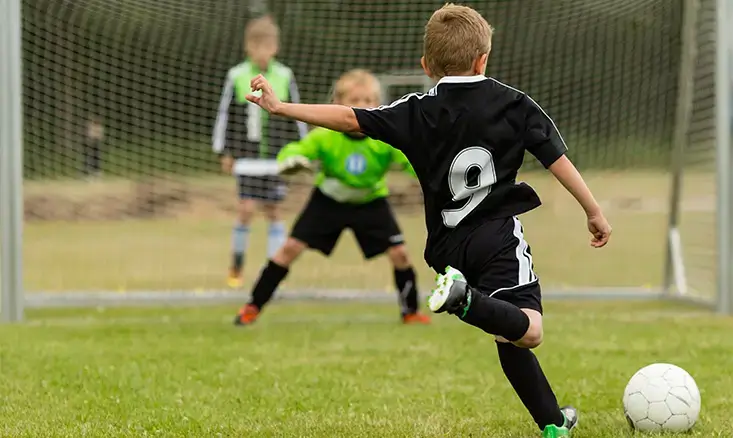
Youth Soccer Penalties
Penalties are an important part of youth soccer rules. They help maintain order and ensure that the game is played moderately.
Yellow and Red Cards
In youth soccer, referees use yellow and red cards to discipline players. A yellow card is a warning for a serious foul or unsportsmanlike behavior. If players receive two yellow cards in a game, they are shown a red card and must leave the field. A red card is also shown for severe offenses like violent conduct. Players who receive a red card may be suspended from subsequent games.
Penalties for Violations
The opposing team is awarded a penalty kick if the foul occurs inside the penalty area. These penalties are designed to punish rule violations and prevent players from gaining an unfair advantage.
Conclusion
Youth soccer is more than just a game; it’s an opportunity for kids to learn essential life skills, make friends, and have fun. By understanding the basic youth soccer rules, parents, coaches, and players can ensure everyone has a positive and enjoyable experience. Remember, the most important rule is having fun and enjoying the beautiful game!
FAQs
What is the offside rule in youth soccer?
How many players are on a youth soccer team?
A youth soccer team, including a goalkeeper, typically has 11 players on the field. However, teams might play with 7 or 8 players for younger age groups to ensure more involvement and a better learning experience.
Can you explain the difference between a direct and indirect free kick?
A direct free kick allows a player to score directly from the kick, while an indirect free kick requires the ball to touch another player before a goal can be scored. These kicks are awarded based on the type of foul committed.
What happens if a player gets a red card in youth soccer?
If a player receives a red card, they must leave the game immediately and cannot be replaced. This is usually of severe fouls or unsportsmanlike behavior, and the player might be suspended from future matches.
Are there special rules for younger kids in soccer?
Yes, younger kids often play with smaller teams, on smaller fields, and with adjusted goal sizes to match their abilities. These modifications make the game more enjoyable and help develop their skills.

Did you find this useful?


